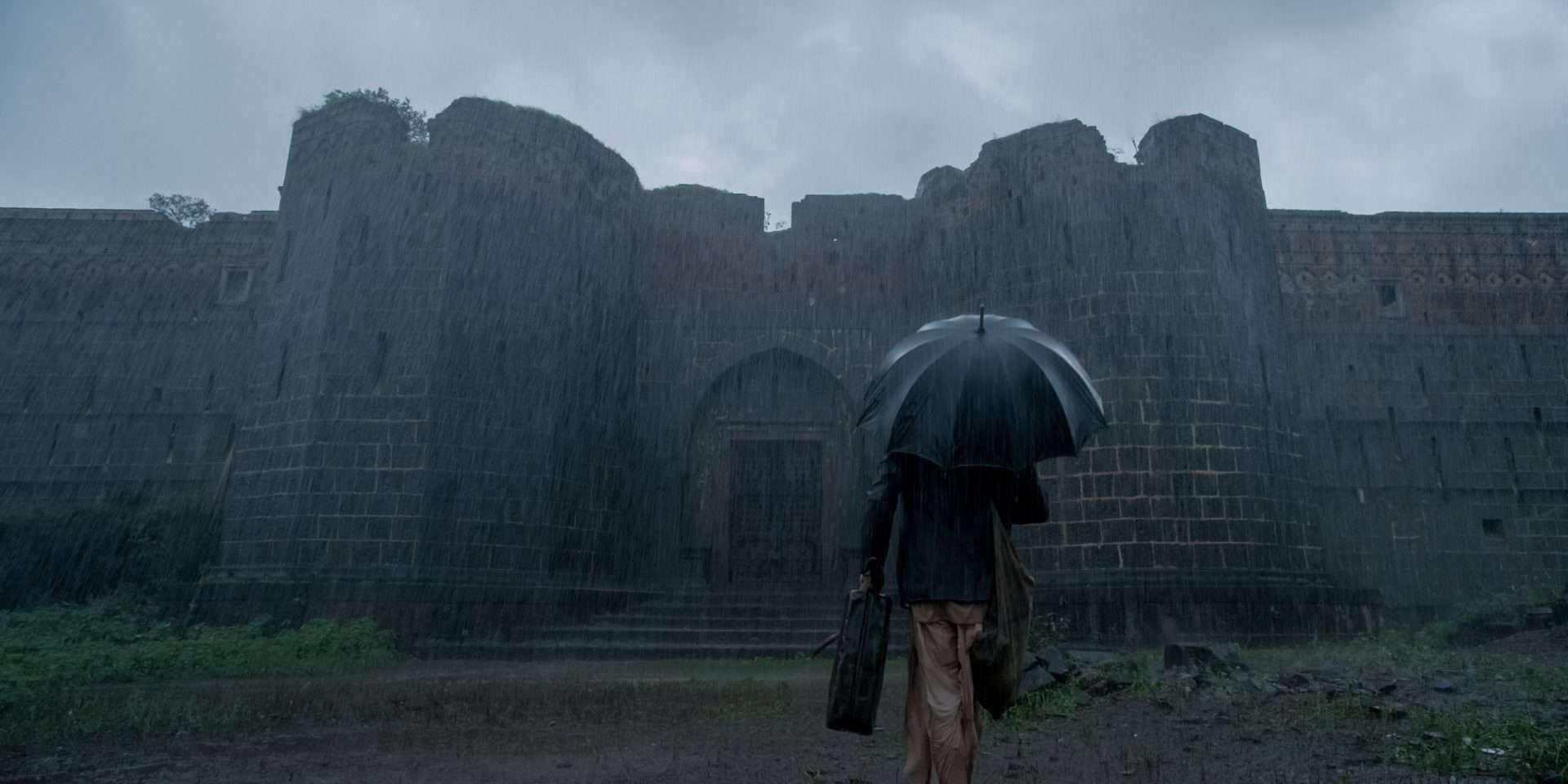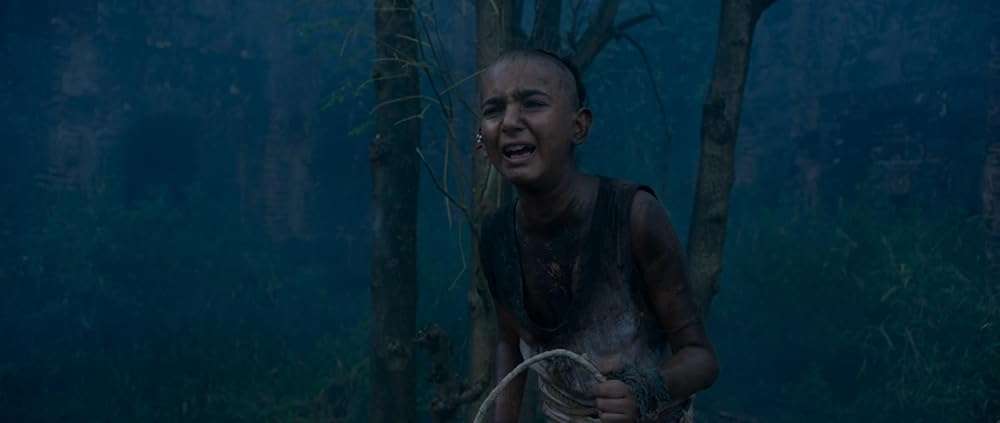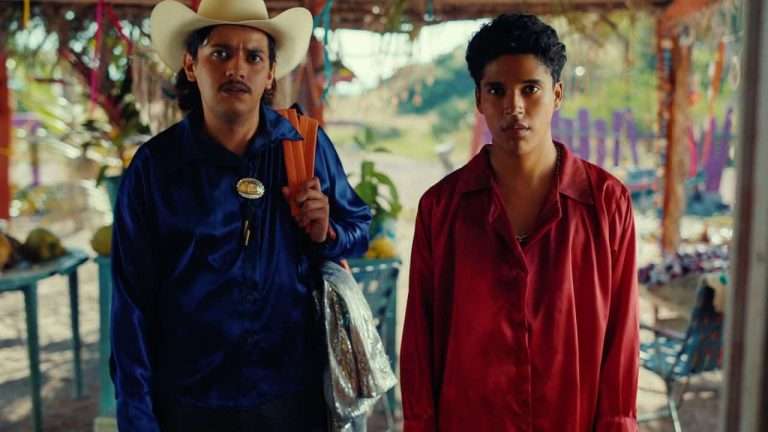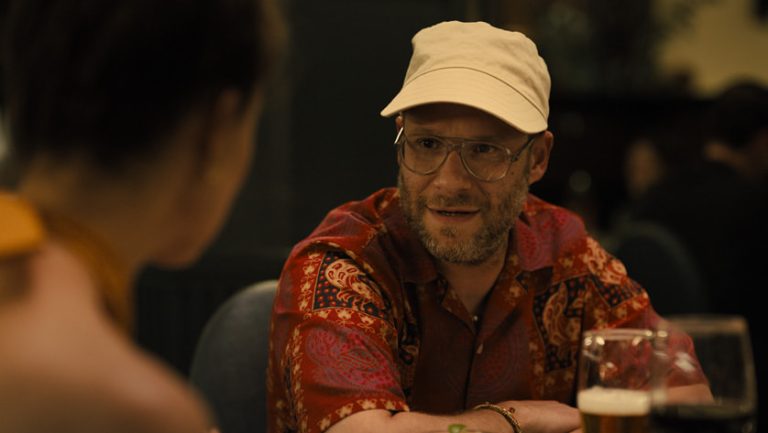Myths are the first stories one hears, imagines, and lives. Growing up where I did, I later realized these folklores became the foundation of my idea of stories, life, and my wireframe of how worlds work. They became the foundation of me. Even as a child, I was always open to mythmaking, no, good, great mythmaking. I watched my Maa do it before my very eyes, indulging me by weaving tales from thin air any moment I begged her to. Perhaps that’s why I love Tumbbad (2018) so much. Not only is it a great attempt at mythmaking, but learning how it was made also seems like a tiny miracle of a film.
When I sat down to write about ‘Tumbbad,’ I couldn’t pick what I wanted to discuss. Was I to speak about its marvelous filmmaking and world-building? Would I mention how genre-bending it is while never completely conforming to any genre? Would I lament away my hatred of horror? The genre bores me, yes, but horror laced with social commentary, horror weaved into fantasy fantastically, horror beyond mere horror? That’s right up my nightmare alley.
Given that the main plot is extraordinarily simple, I wondered: What is this film trying to answer? What problem does this film solve? I decided that like every great monomyth, this, too, is the journey of one Hero—the journey charted by our antihero Vinayak from being doused in unending greed to redemptively overcoming it.
Meeting With The Goddess
Set in the monsoon-cursed village of Tumbbad, the film straps you in immediately. There’s Devi, goddess of Prosperity, mother of all gods, and her son, the demon god Hastar. There’s a world, no, here’s the entire world inside the Devi’s Kokh. Then, there are Brahmin siblings Vinayak and Sadashiv Rao, their Mother, who works for the Sarkaar’s pleasure. There’s Sarkaar, Vinayak’s father and owner of the sone ki mudra (gold coin). The film’s mood is set from the first few frames with the sinister looming vaada, dead-eyed Sarkaar, and unending rain. Not many films manage the horrorification of the most romanticized elements – monsoons and rains – so marvelously as ‘Tumbbad (2018)’ does.
We meet young Vinayak (Dhundiraj Jogalekar) as a calculating, exacting, mature-beyond-his-age teen. It’d be absurd to make blanket statements claiming that a person’s character is established when young – most people are foolish when they’re young, most adults too, for that matter. But in this feudal world, young Vinayak knows exactly what he wants – the sone ki mudra, the gold coin symbolic of the endless wealth his ancestral stories promise. His virasat. He wants it more than his father’s name or home. He wants it so desperately that he fails to mourn his dead brother, for there are simply more important dealings to take care of.
Related List: 15 Best Indian Films of 2018
The Devi had forgiven her beloved Hastar’s destructive, unsparing greed, as mothers do. But in her grief, Vinayak’s mother (Jyoti Malshe) abandons him. She’s afraid his greed will destroy him as it did the family, it will curse him as it did the Budhiya/Daadi, it will consume him as it did his father. On their boat leaving Tumbbad, she threatens to push Vinayak into the river unless he swears never to return. Mirroring her actions, he puts his mother in a headlock, calms her hysteria, and makes the promise.
Of course, Vinayak fails to keep his promise, as sons do.
The Crossing of the First Threshold
On his return to Tumbbad 15 years later, an adult Vinayak (Sohum Shah) finds his way to Daadi, who has become a tree – immortal, like greed, and only wishing to die now. The prosthetics and production design successfully make the world untrustworthy but also give the Daadi a nature so real that it’s impossible not to sympathize with her. Watching ‘Tumbbad (2018)’ has always left me with an uncanny eeriness, the likeness of which I’ve only felt in the vicinity of Guillermo Del Toro’s monsters. There’s a thin line between cursing his monsters and caring for them, and I found myself sorry for Daadi; I found myself caring for her.
Although it’s unsaid, we know that the Daadi was a young bride, a child tasked with bringing the treasure from Hastar. Vinayak’s mother never believes there was any treasure, but Daadi is proof enough for him. She’s his guide to his cursed ancestral wealth.

The Road of Trials
A promise, once broken, is broken forever. The trips to Tumbbad and the descent into mad, mad greed do not stop. The mudras fall in line, and the once illegitimate Vinayak not only starts looking like Sarkaar, but he becomes one. We only see one glimpse of his father: he’s old, lustful, cunning. These traits are found in Vinayak, too, all of which he immediately identifies with. Yet, Vinayak is his mother’s son more.
Yes, he has his father’s greed, but also his mother’s violent rage. Of course, these behaviors can present themselves without a parental figure to observe, but the similarities are stark. It is absurd that, as a viewer, I forgot what was said and done to him as a teenager was emotionally harrowing. Why did I forget that Vinayak was a child, too? Does his greed disqualify sympathy? Especially when I pitied and sympathized with Vinayak’s son Pandurang (Mohammad Samad). Was it because Pandurang wanted his father’s love and Vinayak’s evil nature was beyond needing it?
Vinayak only replicates what he saw his mother do. Repeatedly shown to follow her ways, he, like his mother, has his son in a headlock, mad and ready to punish his greed. He was frustrated, like his mother, at the son’s inability to see beyond the gold coin to consider more important certainties like the death of a brother and the safety of one’s own life.
Woman as The Temptress
‘Tumbbad’ makes subtle yet nuanced commentary on Brahmanical privilege and patriarchy – their indifference to people’s struggle and their feudal, capitalist ways. We know they were unbothered by British rule as the feudal system thrived under them. Raghav doesn’t want a nation-state because the British monarchy has been enabling and vanguarding his capitalist endeavors. Freedom was the need of the oppressed, and the shocking political centralization arrived with independence. The broken fiefdoms provinces are lumped into one nation, one sarkar, and one national-class interest. In showing how the bourgeoisie has taken away from family and made it a mere money relation, with Raghav selling his daughter-in-law and Vinayak deeming his disabled son useless, the filmmakers are aware of their world and not afraid to display it, demanding a response from the audience—ideally elicited is a feeling of disgust. It did for me.
Also Read: 50 Best Hindi Films of the 21st Century
Much is learned about people from their response to things not directly affecting them. An important moment in the film is when Pandurang gives his father’s mistress/slave his hard-earned mudra, claiming a future where he’ll marry her. A little kid said this, and adult men in the audience started screaming, yelling, encouragingly whistling at a kid’s juvenile ideas of marriage, which he saw in his father’s transactional relationship with his partners—the wife need not know about his life, and the mistress need not leave his bed. Vinayak’s wife starts a chakki business in his absence, which infuriates him on his return. It’s funny that men hate when wives monetize what’s their free labor at home, for although he shuts her chakki down, she continues to religiously produce the ann that Hastar can’t touch, which Vinayak uses to distract him.
It also tells about the world that men share and isolate women from. One bonding instance with his father later, Pandurang shuts his mother out.
The Belly of the Whale or The Devi’s Kokh

It is with this greed that Vinayak finally brings his son to Tumbbad for his initiation. On the way, Pandurang is told he’s not ready, and there’s a possibility Vinayak may return home alone. He knows what’s at stake and is prepared to walk into Devi’s Kokh, knowing his son could have a fate similar to that of Raghav and Daadi. One can’t speculate if Raghav’s death weighs on Vinayak, but there is a moment of remorse and guilt, quickly overpowered by greed.
Greed that begets greed.
But why? Vinayak no longer desires the mudra, “Toh phir kyun?” his wife asks. So, when Vinayak succumbs beside the tijori at home (designed to resemble the trap door to the Devi’s Kokh) and starts to weep after Pandurang declares they have enough gold for a lifetime, we realize he does not know why either. This is capitalism’s greatest win – making us chase wants that we don’t even want really. Once you’re convinced a desire is imperial to your being, there’s no turning back. Desire begets desire. How do you fight it? When you do not have the fundamental understanding of family and respect for interpersonal relationships, when you’ve crowned a mudra most essential, how do you return from this hedonism? Now, at his character’s peak, this greed permits Vinayak to send Pandurang into the Devi’s Kokh. This is the real horror of ‘Tumbbad’.
Master of the Two Worlds
Throughout the film, we see glimpses of Vinayak’s humanity. Only glimpses. His final act as a human, before being cursed by Hastar’s touch, is that of sacrifice. The Devi saved Hastar despite how he had exploited her and how much he had taken from her. Vinayak must save his son too. Subversion maximus- from being a man ready to lose his son to now becoming prey to Hastars, sacrificing himself and saving his son; the same disabled son whom he once didn’t speak to. His greed finally surpasses itself. Vinayak’s journey from being an uncaring brother, a disgusting husband, and a terrible father to finally redeeming himself by performing his only unselfish act in life completes Vinayak’s arc as a human, as a parent, and as a protagonist.
Apotheosis
Vinayak’s humanity ends as soon as it begins. And Pandurang? He manages to break his family’s curse.
The mythology of ‘Tumbbad’ is successfully and brilliantly created. It’s one of those rare movies that makes you forget you’re an audience and manages to convince you of its surreal illusion. After finally watching it at the cinemas, I stepped out and wondered, “Why is it not raining here?” That is exactly what a good film is supposed to do. At some point in the future, these myths will be taken, or rather mistaken, for truths. But it is imperative to keep revising our understanding of them, to evolve our ideas beyond what the stories tell us, and to make them the stories we need to hear.







![Red Snow [2019] : ‘Japan Cuts’ Review – A Gloomy and Dark Tale of Lost Lives](https://79468c92.delivery.rocketcdn.me/wp-content/uploads/2019/08/White-Snake-1.jpg)